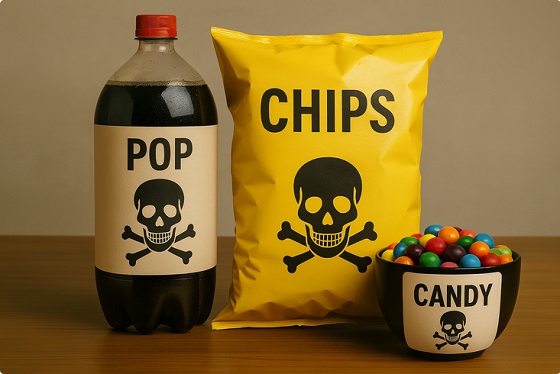Agriculture
Diesel won’t be easily replaced on the farm

From the Frontier Centre for Public Policy
By Brian Zinchuk, contributor to the Frontier Centre for Public Policy.
I was out at the cabin, trying to trim the reeds and weeds along the water, when I came across a stark reminder of how good we have it because of fossil fuels.
I was using the electric whipper snipper when the reel head decided to disassemble itself. But I still had a lot of weeds that needed to be cut.
So I went into the shed and dug out the old scythe Uncle Larry, the previous owner, put in there some time in the preceding 40 years. That scythe likely dates back to the 1930s, making it somewhere around 90 years old. A blacksmith hand-made that scythe.
I took a palm sander to it and put a usable edge on it.
My late grandfather, Harry Zinchuk, showed me how to use a scythe some 30 years ago, when I was around 18. I think he used one when he was 18, around 1935, twisting right to left. My technique was awful, my tool old and probably too dull. But I was able cut down about 40 square feet of reeds in a few sweat soaked minutes.
And with each stroke, I kept wondering how entire teams of men would go into the fields, slicing down crops entirely by hand. It would take days for them to do 160 acres.
It made me think of farming today. A few years ago I was hired to video and photograph a year on the farm for Jason and Sherrill LeBlanc of Estevan. They had their then 14-year-old daughter driving a mammoth Case combine, and doing so well. I wonder how much more productive one girl driving a combine was compared to teams of men with scythes, then stookers (a person who bends over and picks up the loose wheat that had been cut down), then threshing crews.
That same farm now continuously crops over 100 quarters (16,000 acres) of land, harvesting with a crew of around 20 people. They usually accomplish all of that in just a few weeks.
My grandfather worked on those threshing crews, from sun up to sun down. Lard sandwiches were his fuel. Hay fed the horses. How much more efficient are diesel combines now?
For some real-world explanations of this, I strongly encourage reading some of the books by Vaclav Smil, the University of Manitoba distinguished professor emeritus whose prolific writings on energy are a true wake-up call. Last summer I got through How the World Really Works: The Science Behind How We Got Here and Where We’re Going. Other titles of his I hope to get through are Energy and Civilization: A History, Invention and Innovation: A Brief History of Hype and Failure and Power Density: A Key to Understanding Energy Sources and Uses. The general thrust is how mankind’s mastery of energy supplies have allowed us to live the lives we currently enjoy.
Some people seem to think we can easily replace diesel with electric when it comes to farm equipment. One of those people is Canada’s Minister of Natural Resources Jonathan Wilkinson. I was present when he was in Kipling, Saskatchewan, on June 29, to announced $50 million for a wind power project. A local reporter asked him about electric tractors.
Focusing on cost of operations for farmers with regards to the Clean Fuel Regulations, the reporter noted, “That’s going to make life harder for them because, you know, the bottom line is there is no such thing in Saskatchewan right now as an [electric] tractor. You know, it’s just not feasible. And so, as they’re making this transition, what sort of investment is the federal government prepared to get to that?”
Wilkinson replied, “I think the first thing that you said about it’s just not feasible, people would have said exactly the same thing about an electric vehicle 10 years ago, and they would have said the same thing about an electric pickup truck. And now those are available to buy them. There are companies that are working on large scale equipment, including equipment for farming, that will be electric on a go-forward basis. So those kinds of solutions are actually driven by regulations like this. But what I would say is, and I do say, that this will create jobs and economic opportunity, including in the agricultural sector, because you use canola, and soy, and often agricultural residuals to make the products that are going to be driven by this whole thing. So, there are benefits associated with it.”
Electric tractors, eh? Just how large batteries will they require? Will they be the size of an air seeder tank, and pulled behind like a coal tender from locomotives of old? Do you need two, with someone towing one out to the field after charging, to allow continual operations?
Because that’s what farmers do these days. Jason’s seeding crew has their turnarounds to fuel, service, and refill the seeder with seed and fertilizer down to 18 minutes. They run shifts around the clock, many miles from home. And they have two mammoth Case 620 Quadtrac tractors doing so, plus an older tractor pulling a land roller, as well as two sprayers. Where and when are they supposed to charge up? How long will that take their equipment out of operation?
Are they just supposed to find the nearest power pole and hook up some big booster cables?
Farming requires enormous amounts of energy – a lot more than a lard sandwich or EV charger. And diesel is the answer, and will be for a long time to come. Sorry, Mr. Minister. Electric tractors won’t be cutting it anytime soon.
Brian Zinchuk is editor and owner of Pipeline Online, and occasional contributor to the Frontier Centre for Public Policy. He can be reached at [email protected].
Agriculture
Health Canada indefinitely pauses plan to sell unlabeled cloned meat after massive public backlash

From LifeSiteNews
Health Canada has indefinitely paused its plan to allow unlabeled cloned meat in grocery stores after thousands of Canadians, prominent figures, and industry leaders condemned the move.
Health Canada is pausing its plan to put unlabeled cloned meat in Canadian grocery stores, following public outcry.
In a November 19 update on its website, Health Canada announced an indefinite suspension of the decision to remove labels from cloned meat products after thousands of Canadians condemned the plan online.
“The Government of Canada has received significant input from both consumers and industry about the implications of this potential policy update,” the publication read. “The Department has therefore indefinitely paused the policy update to provide time for further discussions and consideration,” it continued, adding, “Until the policy is updated, foods made from cloned cattle and swine will remain subject to the novel food assessment.”
In late October, Health Canada quietly approved removing labels from foods derived from somatic cell nuclear transfer (SCNT) clones and their offspring. As a result, Canadians buying meat from the grocery store would have had no way of knowing if the product was cloned meat.
Many researchers have documented high rates of cloning failure, large offspring syndrome (LOS), placental abnormalities, early death, and organ defects in cloned animals. The animals are also administered heavy doses of antibiotics due to infections and immune issues.
Typically, the offspring of cloned animals, rather than the cloned animals themselves, are processed for human consumption. As a result, researchers allege that the health defects and high drug use does not affect the final product.
However, there are no comprehensive human studies on the effects of eating cloned meat, meaning that the side-effects for humans are unknown.
News of the plan spread quickly on social media, with thousands of Canadians condemning the plan and promising to switch to local meat providers.
“By authorizing the sale of meat from cloned animals without mandatory labeling or a formal public announcement, Health Canada risks repeating a familiar and costly failure in risk communication. Deeply disappointing,” food policy expert and professor at Dalhousie University Sylvain Charlebois wrote on X.
"By authorizing the sale of meat from cloned animals without mandatory labeling or a formal public announcement, Health Canada risks repeating a familiar and costly failure in risk communication. Deeply disappointing."
More on this week's Food Professor Podcast! https://t.co/UZTIcQzUN3
— The Food Professor (@FoodProfessor) October 30, 2025
Likewise, Conservative MP Leslyn Lewis warned, “Health Canada recently decided that meat from cloned animals and their offspring no longer needs a special review or any form of disclosure.”
“That means, soon you could buy beef or pork and have no idea how it was bred,” she continued. “Other countries debate this openly: the EU has considered strict labelling, and even the U.S. has admitted that cloned-offspring meat is circulating.”
“But here in Canada, the public wasn’t even told. This is about informed choice,” Lewis declared. “If government and industry don’t have to tell us when meat comes from cloned animals, then Canadians need to ask a simple, honest question: What else are we not being told?”
Health Canada recently decided that meat from cloned animals and their offspring no longer needs a special review or any form of disclosure. That means, soon you could buy beef or pork and have no idea how it was bred.
Other countries debate this openly: the EU has considered… pic.twitter.com/zCnqJOpvf3
— Dr. Leslyn Lewis (@LeslynLewis) November 14, 2025
Likewise, duBreton, a leading North American supplier of organic pork based out of Quebec, denounced the move, saying, “Canadians expect clarity, transparency, and meaningful consultation on issues that directly touch their food supply. As producers, we consider it our responsibility and believe our governing food authorities should too.”
According to a survey conducted by duBreton, 74 percent of Canadians believe that “cloned meat and genetic editing practices have no place in farm and food systems.”
Agriculture
Federal cabinet calls for Canadian bank used primarily by white farmers to be more diverse

From LifeSiteNews
A finance department review suggested women, youth, Indigenous, LGBTQ, Black and racialized entrepreneurs are underserved by Farm Credit Canada.
The Cabinet of Prime Minister Mark Carney said in a note that a Canadian Crown bank mostly used by farmers is too “white” and not diverse enough in its lending to “traditionally underrepresented groups” such as LGBT minorities.
Farm Credit Canada Regina, in Saskatchewan, is used by thousands of farmers, yet federal cabinet overseers claim its loan portfolio needs greater diversity.
The finance department note, which aims to make amendments to the Farm Credit Canada Act, claims that agriculture is “predominantly older white men.”
Proposed changes to the Act mean the government will mandate “regular legislative reviews to ensure alignment with the needs of the agriculture and agri-food sector.”
“Farm operators are predominantly older white men and farm families tend to have higher average incomes compared to all Canadians,” the note reads.
“Traditionally underrepresented groups such as women, youth, Indigenous, LGBTQ, and Black and racialized entrepreneurs may particularly benefit from regular legislative reviews to better enable Farm Credit Canada to align its activities with their specific needs.”
The text includes no legal amendment, and the finance department did not say why it was brought forward or who asked for the changes.
Canadian census data shows that there are only 590,710 farmers and their families, a number that keeps going down. The average farmer is a 55-year-old male and predominantly Christian, either Catholic or from the United Church.
Data shows that 6.9 percent of farmers are immigrants, with about 3.7 percent being “from racialized groups.”
National census data from 2021 indicates that about four percent of Canadians say they are LGBT; however, those who are farmers is not stated.
Historically, most farmers in Canada are multi-generational descendants of Christian/Catholic Europeans who came to Canada in the mid to late 1800s, mainly from the United Kingdom, Ireland, Ukraine, Russia, Italy, Poland, the Netherlands, Germany, and France.
-

 Energy1 day ago
Energy1 day agoCanadians will soon be versed in massive West Coast LPG mega-project
-

 Alberta2 days ago
Alberta2 days agoKeynote address of Premier Danielle Smith at 2025 UCP AGM
-

 Alberta2 days ago
Alberta2 days agoNet Zero goal is a fundamental flaw in the Ottawa-Alberta MOU
-

 Food2 days ago
Food2 days agoCanada Still Serves Up Food Dyes The FDA Has Banned
-

 Addictions2 days ago
Addictions2 days agoManitoba Is Doubling Down On A Failed Drug Policy
-

 Daily Caller1 day ago
Daily Caller1 day agoTom Homan Predicts Deportation Of Most Third World Migrants Over Risks From Screening Docs
-

 C2C Journal22 hours ago
C2C Journal22 hours agoLearning the Truth about “Children’s Graves” and Residential Schools is More Important than Ever
-

 National24 hours ago
National24 hours agoMedia bound to pay the price for selling their freedom to (selectively) offend




